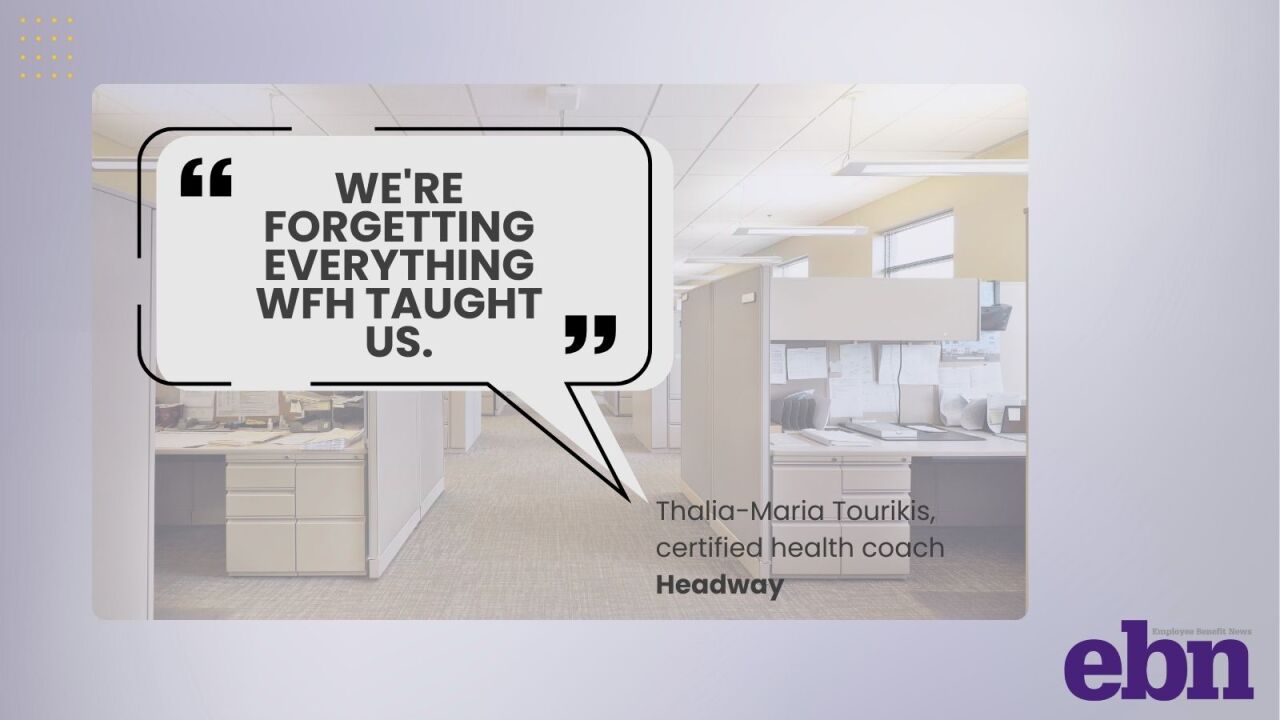Last month, the Government Accountability Office released a congressionally mandated report on best practices in patient safety in the nation’s hospitals. The results were discouraging.
GAO found that hospitals have trouble obtaining data to identify: adverse events within their institutions, existing best practices, priorities for patient safety practices, and on how to ensure consistency in compliance with those practices. The report also featured six payer organizations’ efforts to reduce preventable deaths and unnecessary medical expenditures using reimbursement incentives and non-financial support.
What does this have to do with employee benefit management?
There are steps plan sponsors can take to ensure that employees and their dependents are in better shape after they leave the hospital.
They may want to start by reading the full report, “
The Patient Safety Movement Foundation, a nonprofit that works closely with healthcare organizations to eliminate preventable deaths, had requested the GAO examination. Despite the findings, PSM was encouraged by the report, calling it “an excellent beginning to a better understanding of the challenges our hospitals face to eliminate preventable deaths. The number of preventable deaths in hospitals has increased over the past decade. To reverse this heart-breaking trend, we need to better align incentives and reporting requirements so that hospitals can learn faster and implement better processes to provide safe and dignified care,” said PSM founder Joe Kiani.

“We have collaborated with leaders from the healthcare, medical technology, academic, patient advocacy, and public policy communities to develop our Actionable Patient Safety Solutions that will solve the exact problems that this GAO report is highlighting. This issue is not the absence of solutions, but a lack of transparency and measurement as to where the most pervasive problems in hospitals lie,” said Kiani.
But The Leapfrog Group, an employer-backed patient safety advocacy organization that surveys hospitals annually to determine compliance, had a different reaction. According to Leapfrog’s president, Leah Binder, “the GAO findings are extremely disappointing, suggesting a Keystone Cops operation in hospitals for addressing hospital safety.” Binder went on to say, “Hospitals are flummoxed by the problem of patient safety,” summarizing GAO’s findings thusly:
· Hospitals can’t find the problem. Hospitals cannot identify in their own records all their errors, accidents and infections, even though they are required to report many of them to the federal government.
· Hospitals can’t figure out how to solve the problem. Despite a large body of research about how to address most safety problems, hospital leaders can’t seem to find the time to read it. Some hospitals even admit to throwing a bunch of ideas at a problem at once – surprised when it becomes nearly impossible to tease out which ones worked, and which didn’t.
· Nobody does what they are told anyway. Even when hospitals identify a problem that is hurting patients, and commit to an evidence-based solution to stop the harm, they can’t get their staff on board.
“When tens of thousands of people are dying from preventable errors, is it too much to ask hospitals to read the latest research? It’s as if the house is burning down with people inside, and the fire department is confused about which room to attack first, and which hose to use. Worse, the chief isn’t sure the firefighters will do the job,” said Binder.
Binder also notes that the GAO report has some significant limitations. The researchers interviewed leaders at only six hospitals, so it clearly can’t be generalized to represent the universe of 5,000 hospitals nationwide. Nor did the GAO see fit to differentiate among those six in assigning credibility to their interviews, even though some hospitals were chosen because they are high performers and some because they are low.
Perhaps more importantly, nobody seems to care: “Policymakers and industry leaders haven’t condemned the report as inaccurate or misleading. No one in the hospital industry has commented. In fact, the report has generated very little attention at all. That’s a big problem,” said Binder.
Binder is concerned that there is a startling lack of urgency from hospitals and policymakers even when so much is at stake. Why might that be? She believes that “one major reason is the way hospitals get paid. Traditional fee-for-service payment means the more harm, the higher the payment. Clinicians care deeply about patients, but our financing system makes it very easy for them to treat patient harm like a second thought. The report also offered perspectives from some health plans. There, too, we find a disturbing lack of urgency. Only two of the six had any investment at all – generally modest – in supporting or incentivizing efforts to improve safety.”
At the same time, Binder notes that the report has two surprising bright spots. First, the federal government’s Partnership for Patients program has helped hospitals collaborate and set goals to improve safety, and the impact has been significant. Many lives were saved. We don’t often see substantial results from patient safety initiatives, so this is a promising finding and a feather in the cap of the administration.
Another surprising and hopeful sign was the rapid pace of hospital consolidations may have the potential to improve patient safety. Hospitals selected by the GAO for study that were part of larger systems put a higher priority on safety, and didn’t seem to have the same problems with data analysis and strategy. This would suggest the potential for system leaders to focus attention across hospitals on achieving safety goals – elevating safety on the priority list and minimizing some of the burden individual hospitals report in researching the data and the solutions.
“Ultimately we need to tie system payments to the effectiveness of interventions."
Binder concluded that “ultimately we need to tie system payments to the effectiveness of interventions. That was the original vision for accountable care organizations, and clearly we need to recommit to achieving it.”
Both PSM and Leapfrog acknowledge that improvement in patient safety has been slow. Evidence supports their views. According to some studies, about half a million patients die in hospitals due to mistakes – also known as “never events” – and another 10 million become ill or injured while hospitalized. These figures are five and 10 times higher, respectively, than were reported in the Institute of Medicine report, “To Err is Human,” issued 15 years ago.
In addition to lost lives and reduced quality of life, medical mistakes add extra costs to the nation’s healthcare costs, now pegged at about $3.5 trillion, over $40 billion of which is attributed to re-admissions often necessitated by medical errors. Leapfrog estimates that employers with 1,000 or more admissions pay a
“hidden surcharge” of $9 million.
The GAO report has inspired some Congressional action. For example, Senator Sheldon Whitehouse (D-RI) has introduced the “Patient Safety Improvement Act of 2016 [S. 2467],” which is “a great step towards creating the transparency needed to improve patient safety,” said PSM’s Kiani.
What benefit plan sponsors can do
Employers can take more immediate steps to help hospitals to ensure that employees, dependents -- and all patients –are in better shape after they leave the hospital than when they went in by. Leapfrog’s Binder urges employers to:
· Insist that hospital make safety a priority, ideally, a No. 1 priority.
· Join the Leapfrog Group and use its hospital rating system to select hospitals and its calculator to determine their costs for medical mistakes.
· Encourage employees and dependent to seek care in safe hospitals.
· Make financial support for hospitals contingent on progress in patient safety.
· Craft health insurance/plan benefits that reward safe providers and penalize those with poor safety records.





